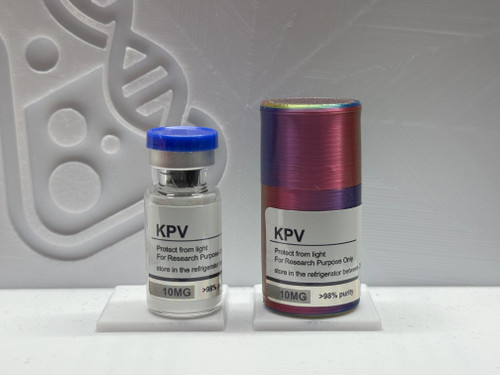Product Overview
? TB-500 – Research-Grade Thymosin Beta-4 Fragment for Regenerative Pathway Investigation
Synonyms: Thymosin Beta-4 Fragment, Timbetasin
CAS Number: 77591-33-4
Sequence: Ac-Ser-Asp-Lys-Pro-Asp-Met-Ala-Glu-Ile-Glu-Lys-Phe-Asp-Lys-Ser-Lys-Leu-Lys-Lys-Thr-Glu-Thr-Gln-Glu-Lys-Asn-Pro-Leu-Pro-Ser-Lys-Glu-Thr-Ile-Glu-Gln-Glu-Lys-Gln-Ala-Gly-Glu-Ser-OH
Molecular Weight: ~4963.4 Da
Form: Lyophilized powder
Purity: ≥98% (HPLC)
Use: For laboratory research only. Not for human or veterinary use.
? Overview
TB-500 is a synthetic peptide fragment derived from Thymosin Beta-4 (Tβ4), a naturally occurring protein found in platelets and various tissues. It is under investigation in laboratory settings for its role in cellular migration, angiogenic signalling, and tissue adaptation.
Its structure is designed to mimic key regions of Tβ4 associated with actin regulation and regenerative signalling, making it suitable for studies in non-human models focused on wound recovery and structural remodelling.
⚙️ Mechanistic Insights
Preclinical research suggests TB-500 may influence several biological pathways:
• Actin Regulation – May sequester G-actin to support cytoskeletal reorganization and cell migration
• Angiogenesis Support – Studied for its role in VEGF and Notch signalling pathways
• Stem Cell Recruitment – Explored for its impact on cellular differentiation at injury sites
• Collagen Alignment – Associated with tissue remodelling and scar minimization
• Cytokine Modulation – Investigated for its effects on inflammatory signalling and immune cell migration
These findings are based on published scientific literature and are not indicative of human outcomes.
? Research Context
TB-500 is being evaluated in controlled laboratory environments for its relevance to:
• Muscle, tendon, and ligament model systems
• Cardiac tissue adaptation and post-injury recovery
• Dermal remodelling and follicular biology
• Endothelial function and neovascularization
• Ocular surface and corneal healing assays
All applications are strictly limited to research use and are not intended for therapeutic, diagnostic, or clinical purposes.
? Packaging & Storage
• Supplied as sterile lyophilized powder
• Store at –20°C in a dry, light-protected environment
• Reconstitute under sterile conditions using bacteriostatic water or saline
• Avoid acidic solvents during reconstitution
• Refrigerate reconstituted solution at 2–8°C for multi-use stability
Note: Solvent compatibility and formulation protocols are available upon request for qualified research institutions
⚠️ Compliance Notice
This product is intended strictly for laboratory research use. It is not approved for human or veterinary applications and must not be used in food, drugs, or cosmetics. All information is based on published scientific literature and is provided for educational and informational purposes only. Researchers are responsible for ensuring compliance with local laws and institutional guidelines.








